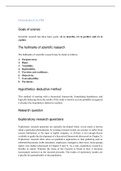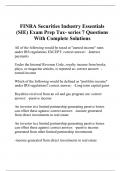Samenvatting
Summary for MOT2312 Research Methods
- Vak
- Instelling
- Boek
This is not a long-winded summary, but the most concise review material. It will help you to capture the most points of the exam in the shortest possible review time. If you have taken this course repeatedly and never passed, this summary will be the perfect choice to help you pass in one sitting.
[Meer zien]













